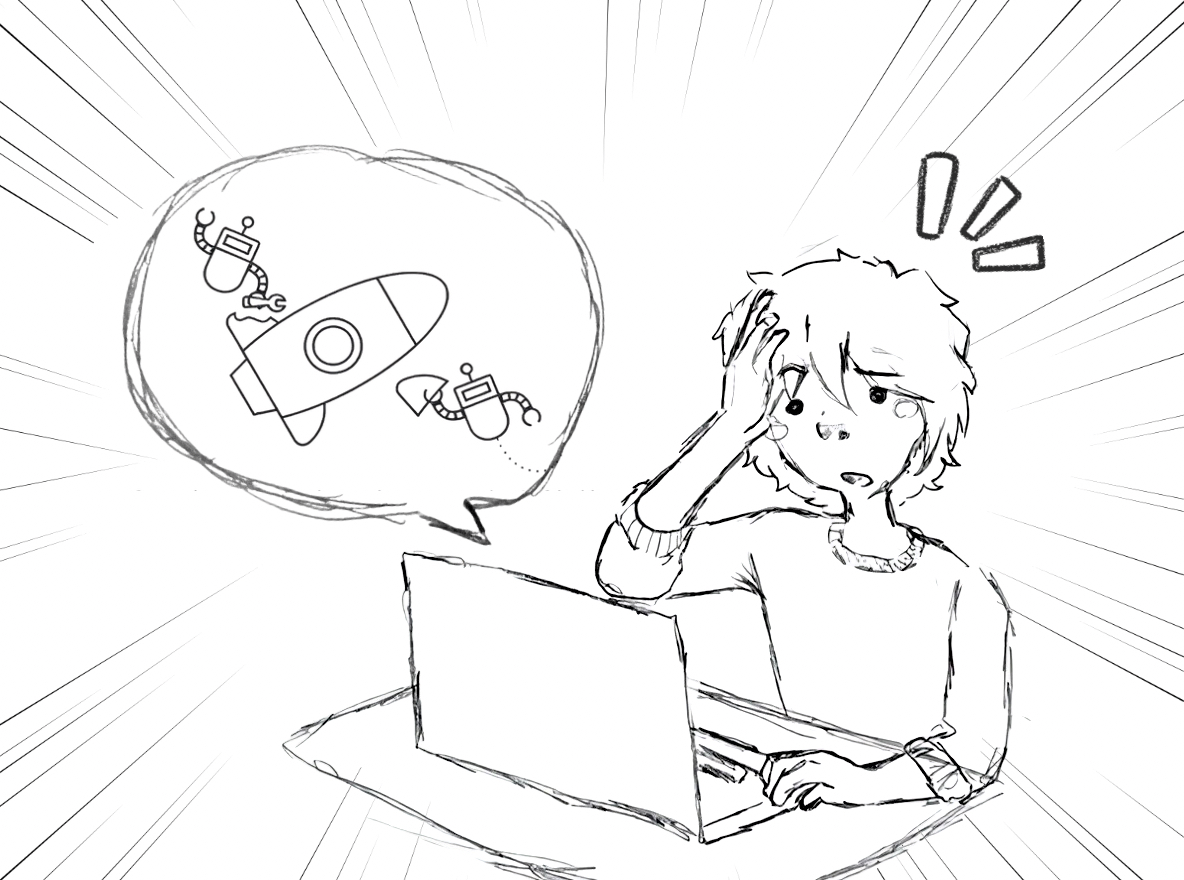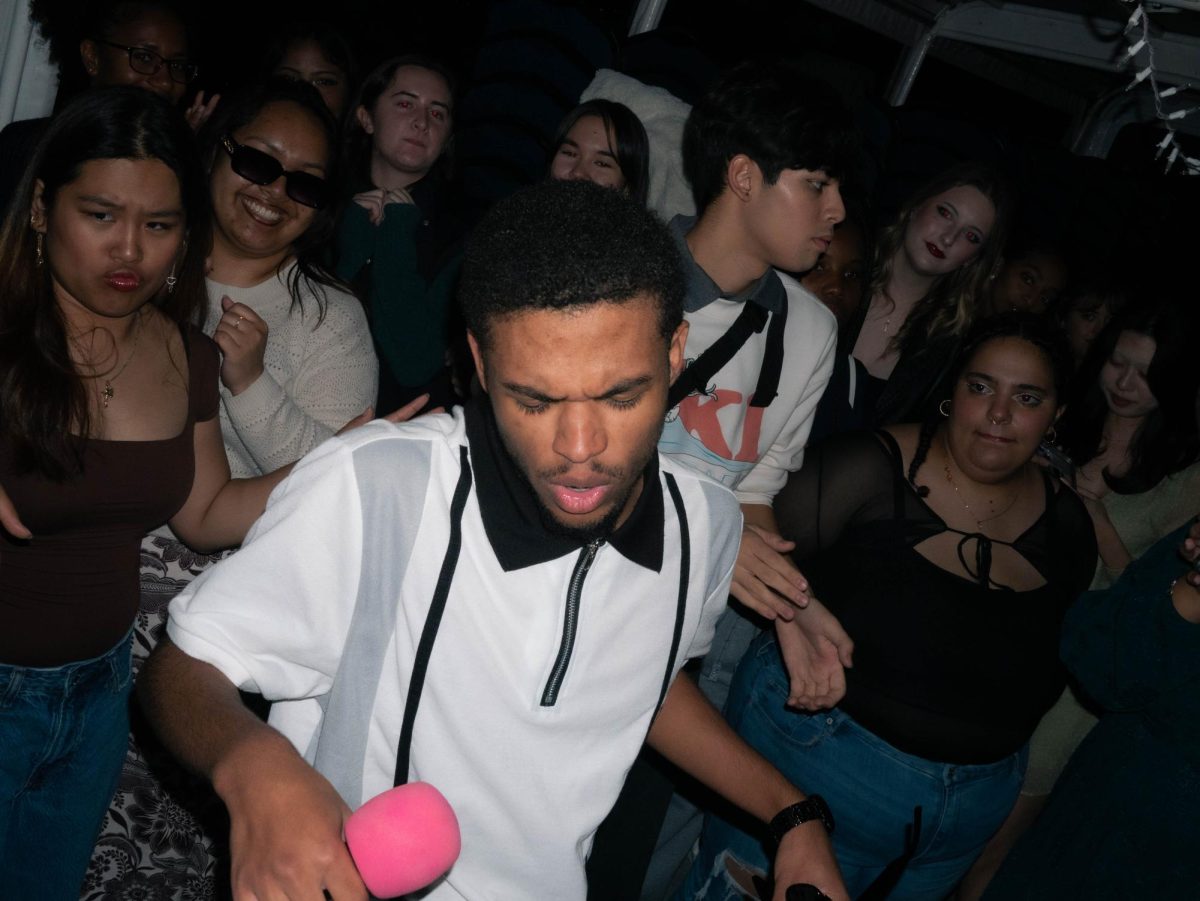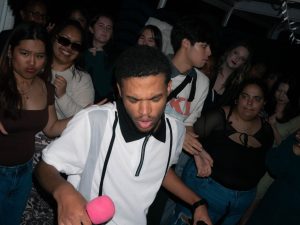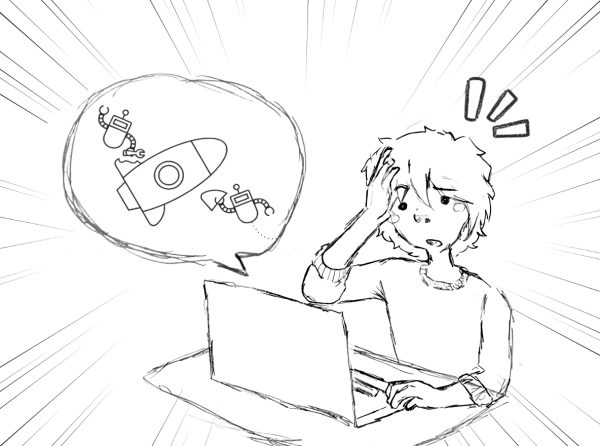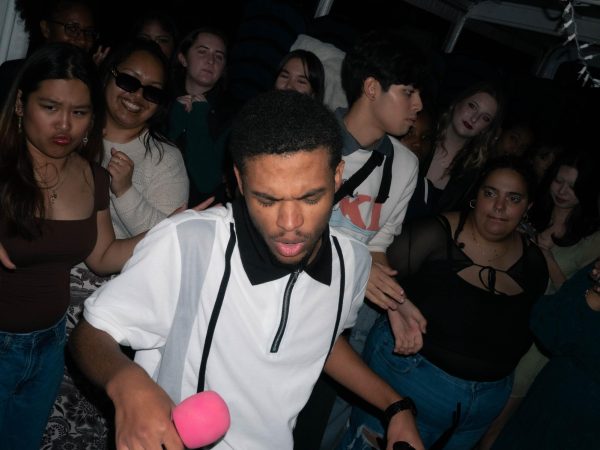Welcome home
Harry Styles’ “Harry’s House” brings ‘70s vibes to the 21st century
May 27, 2022
Sit back, relax and take a trip to the 1970s with Harry Styles and his third studio album “Harry’s House.” Hallmarked by strong bass lines and disco-worthy tunes, Styles new album is undoubtedly worth a listen.
The album opens with “Music for a Sushi Restaurant,” an upbeat love song that is the first of many. The next song, “Late Night Talking,” brings up the 70s style with a strong synthy keyboard.
“Grapejuice” is third on the album, and slows down the pace a bit. Just like the first two tracks on “Harry’s House,” “Grapejuice” is a love note to “you,” the subject of the song. Interestingly, most of the songs on “Harry’s House” are written to an unnamed person referred to only as “you.” Perhaps Styles’ intention was to harken back to the old days of Wattpad and Y/N.
The fourth song on the album is “As It Was,” the only single Styles released before the album drop. Despite its cheerful beat, the lyrics of the song tell of a beautiful life that is long gone. “You know it’s not the same as it was,” Styles croons. Thinking back to how Styles got his start, he certainly is not the same as he was.
Styles first garnered fame as a member of One Direction, a British boy band formed on the reality television singing competition X-Factor in 2010. To the dismay of millions of young fans, the band split in 2015 and all five members went on to pursue their own solo careers.
As a solo artist, Styles’ brand and style have developed, making him one of the most famous musicians in the world. He currently has 67 million monthly listeners on Spotify, and is the 4th most streamed artist on the platform.
Following the success of his sophomore album “Fine Line,” “Harry’s House” was highly anticipated by fans and non-fans alike. The albums have their similarities — a mixture of radio hits and soft ballads and uncomplicated lyrics that pull at the heart strings — but Styles’ most recent project has also introduced a new sound and a larger vocal range unseen in his music before.
The next two songs on “Harry’s House,” “Daylight” and “Little Freak,” are slow and deep, bursting with yearning for a lover that has left him. “I’m just thinking about you,” Styles sings over and over on “Little Freak,” begging for a return to how life was before.
“Matilda” is the halfway point of the album, and is unique from other songs on the album in that it focuses on a non-romantic type of love. The melody is slow as Styles sings to “Matilda,” a girl who was never shown love by her family, despite straining to be everything they wanted. Styles invites Matilda in to make her tea and toast, and to start a family of her own. “Harry’s House” becomes her home.
The transition from “Matilda” to the next track on the album, “Cinema,” is somewhat jarring. “Cinema” is a song dripping with sexual undertones, having a similar vibe to Styles’ well known “Watermelon Sugar.” “Do you think I’m cool too?/ Or am I just too into you?” Styles asks the woman of his affections.
This theme of unrequited love continues through three of the next tracks — “Daydreaming,” “Satellite” and “Boyfriends.” His songs seem to reflect the opposite of the reality that he is the subject of thousands of teenage girls’ dreams.
“Keeping Driving” is a respite from the unanswered desire of the other tracks. In this song, Styles paints the picture of a summer drive full of yellow sunglasses, film photos and sea views. In this moment he has finally gotten the woman of his dreams. But unfortunately that happiness does not last long for Styles.
The final track on “Harry’s House” is “Love of My Life.” Again, Styles thinks back on an ended relationship. “Maybe you don’t know it’s lost ‘til you find it,” he sings. This final song is a goodbye to the lover he has been yearning for through the entire album — the true love of his life.
Harry Styles’ junior album “Harry’s House” leads the audience through the many stages of a relationship, from pining for love, to leaving them behind to find oneself. It feels as though the listener could pull on a pair of bell bottom jeans, queue up “Harry’s House” and be transported back 50 years to the era that inspired the album’s sound.
Or, as Harry Styles would say, back to the way that it was.

